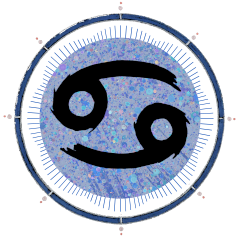Welcome to the Key Life Transits class resources page. This page contains your class materials and the recordings of both full sessions.
Class Recording
Part 1
Part 2
Class Materials
PDF of sample charts
Key Life Transits introductory video
Notes by Eric
Astrology is a tool to help with the art of navigating through space, time and existence. This implies that it’s about a process of questioning and gaining understanding and experience. This is what time is for.
However, astrology is also a conversation between two people; and it’s a complex technological and philosophical area of study. In today’s world, the study of astrology seems archaic not because of the subject matter but rather because of the attention involved: detail, listening, extended years of work, patience, reflection, inner experience.
Full stop here. It is not easy to learn astrology or to learn to practice astrology. It can’t be reduced to formulas and techniques. Every situation is unique. It takes time to get to know someone, and to understand them.
Ultimately astrology is about people, not maths or planets or theories. Astrology is one tool to help you understand people. It provides a flexible framework to move around inside of; it offers possible contexts; and provides the basis of questions much more suitably than it does answers.
Key life transits are sign posts and mile markers along the journey. We need them dearly in a society that has a way of refusing to mark progress. They are like a series of initiations where specific topics, circumstances or types of experiences come up.
They are all different for everyone. So while they are comparable, you need to be attentive to the specifics of both the life and the chart.
All transits are about the direct experience of astrology. You can study the natal chart on its own, and identify what the placements might mean, though there is an element of speculation here. When working with a person, it’s necessary to take a holistic view and find out as much about them as you can. Do not rely only on astrology.
I suggest that transits be used as probes rather than as predictive tools. A probe is a way of making a gentle query into someone’s experience.
The deeper layers of the natal chart are revealed by transits. The result of any transit is about both the natal placement (in its aspect pattern) and the quality of the transit event.
Key life transits help astrologers understand where a person is in their development, and also describe opportunities for gaining leverage and traction over one’s situation.
Key life transits are comparable between people, who have them at a similar age, so there is an opportunity for learning. If you’ve worked with 10 people on their Saturn return, you start to get a sense of what this transit is about and how you might offer insight. Yet you need to be sensitive to the differences between charts and people.
You begin by studying your own chart, and building an inventory of your own transit events.
Then you study the lives of others, though you need to know why you’re doing this. If your motivation is to learn astrology, that’s one approach: you have to read the charts of others to have a more diversified view.
If your motive is to assist others in their growth, it helps a lot to understand growth process as described through transits — and through other methods of assessment.
This has to be done carefully because anything that can help can also harm. At first, you have to be slow and methodical.
About commentaries on transits
These are almost always biased. So you cannot take any one commentary too seriously; if you’re going to read one, read several. When you work for someone, you need to develop an original approach to their transit as it relates to their life experience and their particular aspect pattern.
An aspect means that when a transit happens to one part of the pattern, it also happens to the other part of the pattern.
- Make sure you know how to spot a transit, and how to look it up in the ephemeris. My Mercury retrograde intro video is good for that. If you do not know how to do this, don’t worry; the rest of the information is still relevant.
- Key life transits represent development stages for a cohort group. Other transits can occur at any time.
- Key life transits are one of the first things to check, as most clients will come in during one. The question is, does this person’s experience show up in their transits?
- Other specific individual transits often happen at the same time and can be equally relevant, but are distinguished by being specific to the individual, i.e., t.Pluto conjunct n.Venus.
- There are skills for sorting out the qualities of multiple transits, which mainly involve accounting for them in some way and giving each planet a voice in the discussion. The most important of those are transits to the Moon, the Sun and the mundane angles.
Please have a story ready for one of these! What confirmed that a Saturn transit was indeed a Saturn transit?
- The Saturn Cycle — basic maturity, boundaries, sense of responsibility
- The Chiron Cycle — the quest / healing journey
- The Uranus Cycle — rapid transformations
- The Neptune Cycle — seeing past illusions
- The Pluto Cycle — evolutionary steps and leverage points; deep transformation
- It’s worth considering the lunar nodal cycle at some point in this discussion.
Other Resources
In Canada, They Call it Therapy — article by Eric on the practice of astrology consulting



